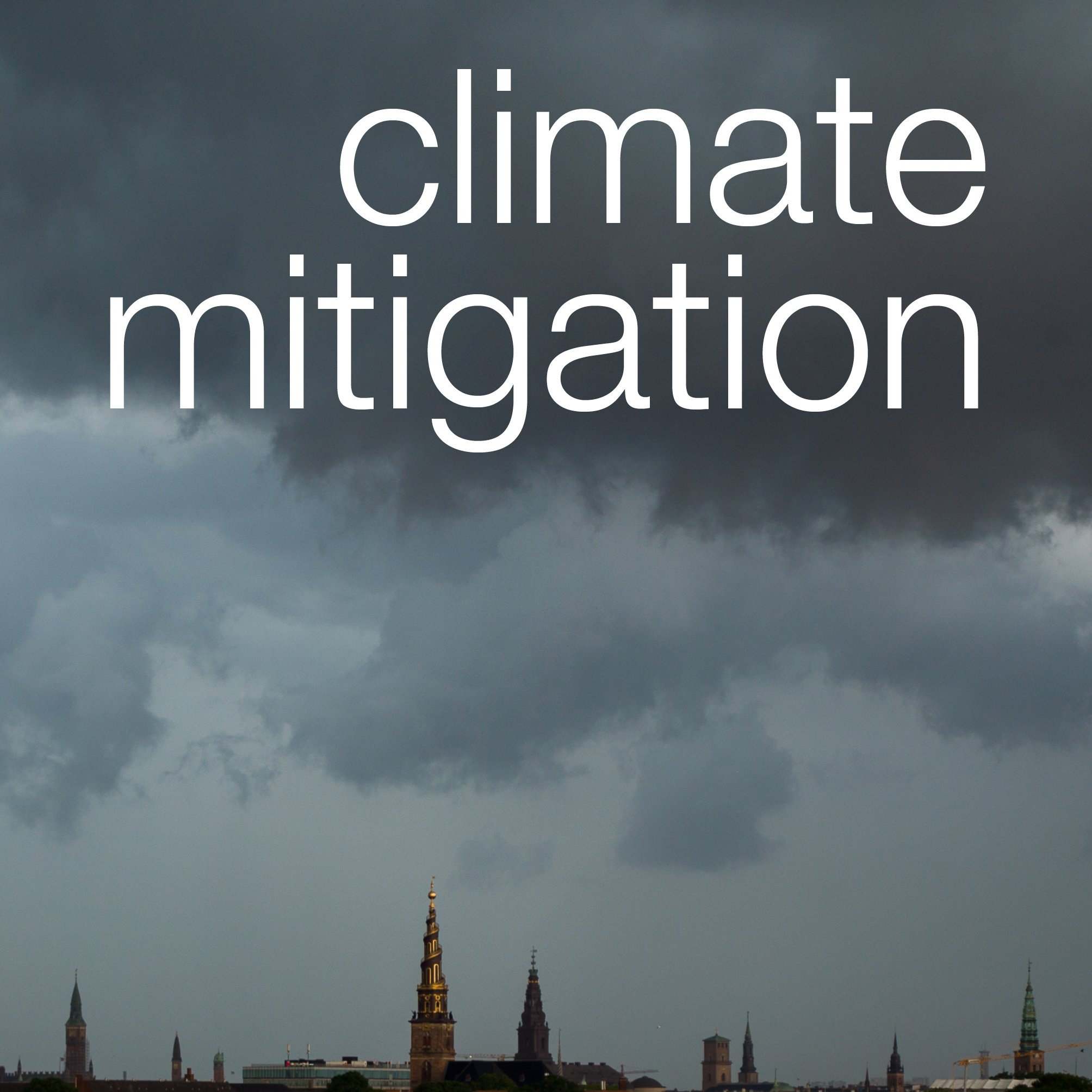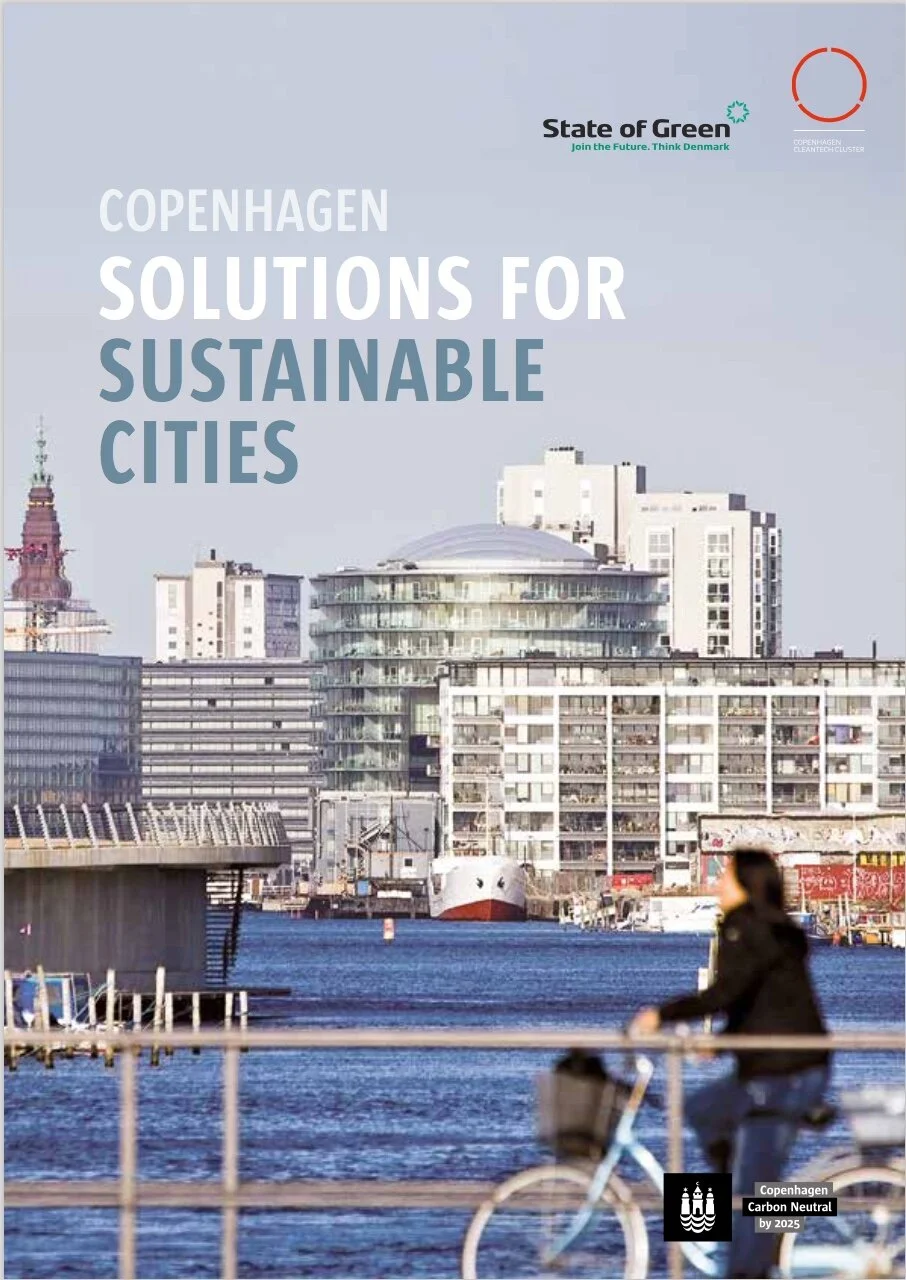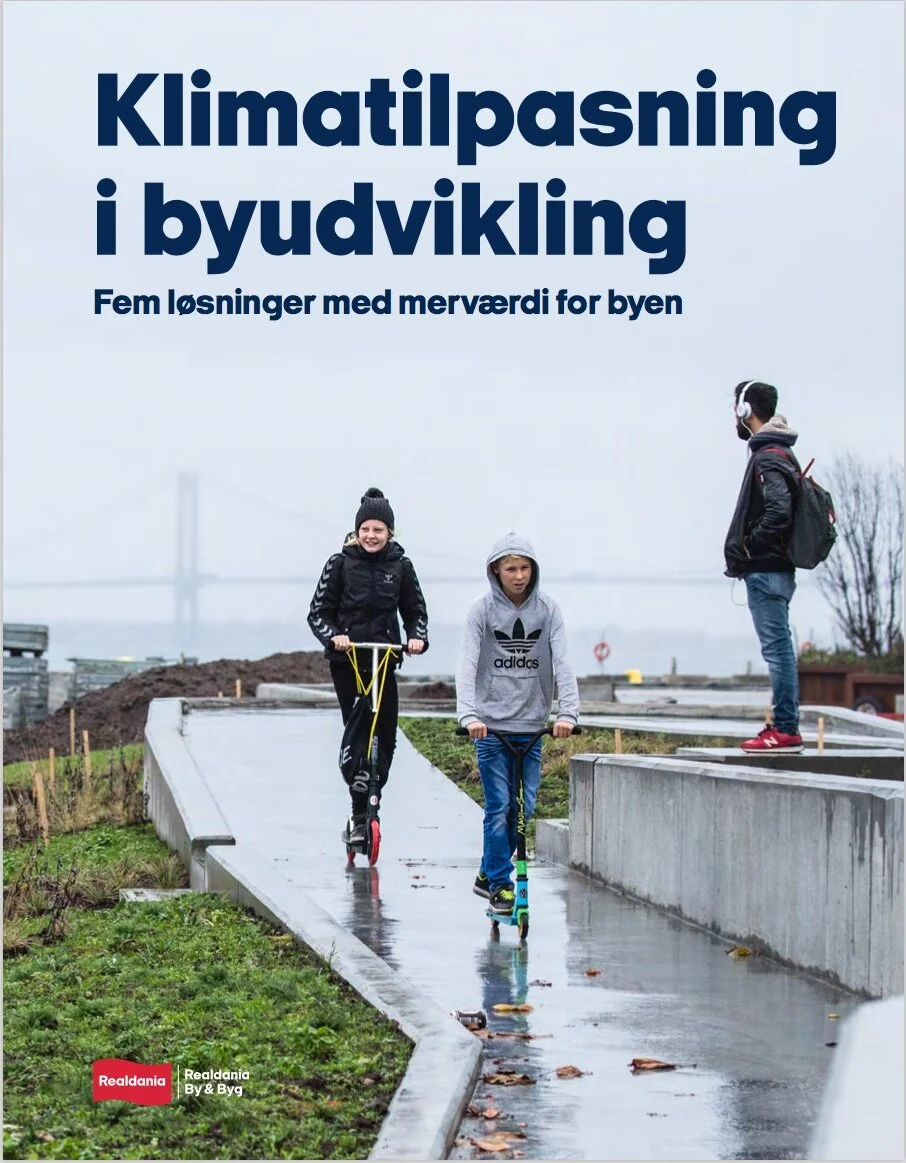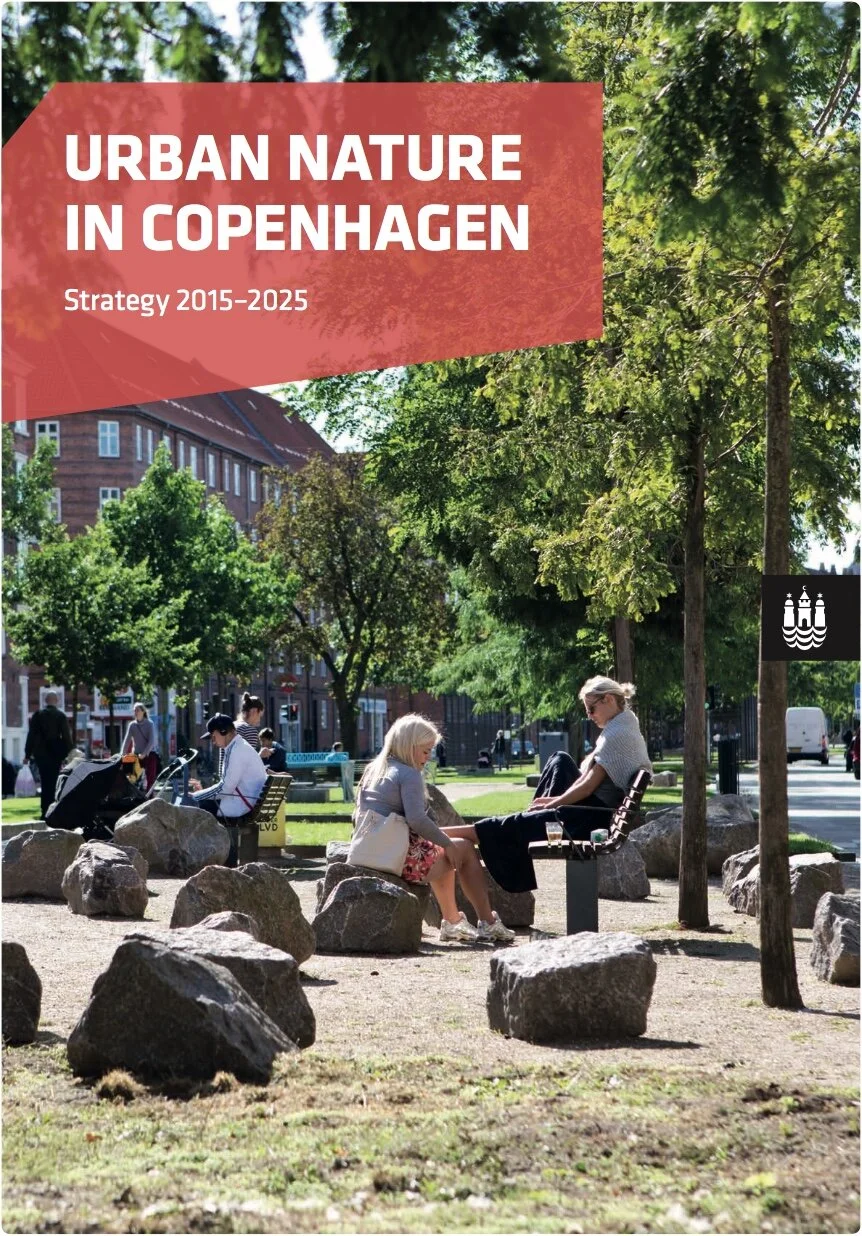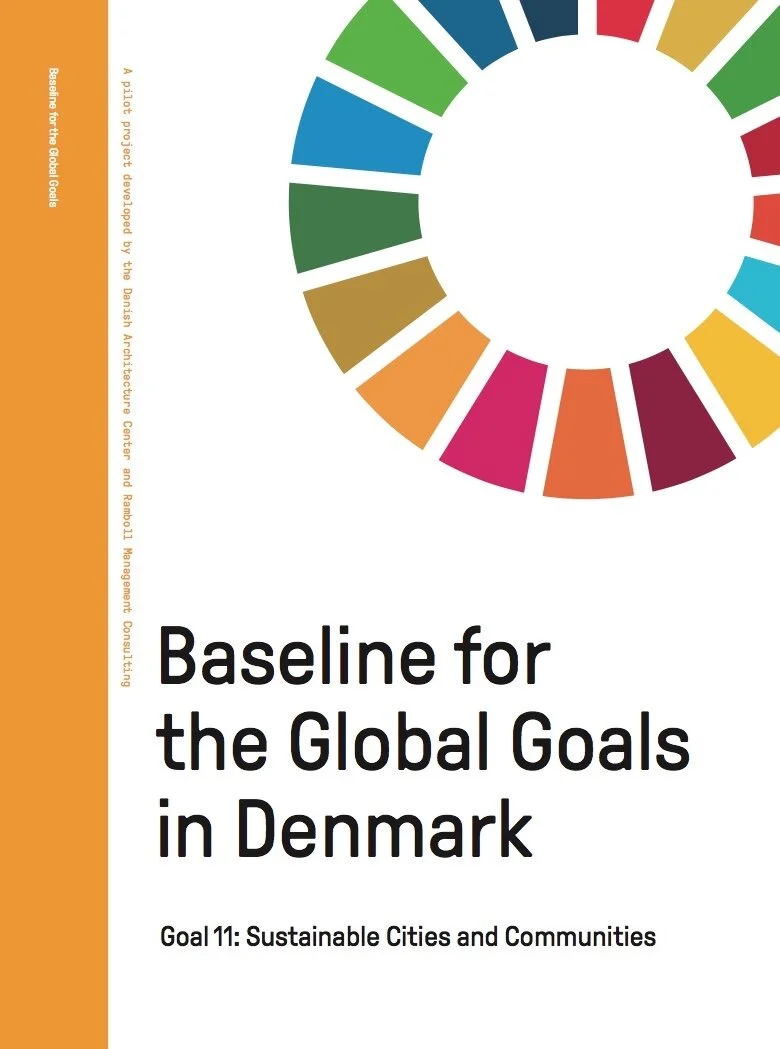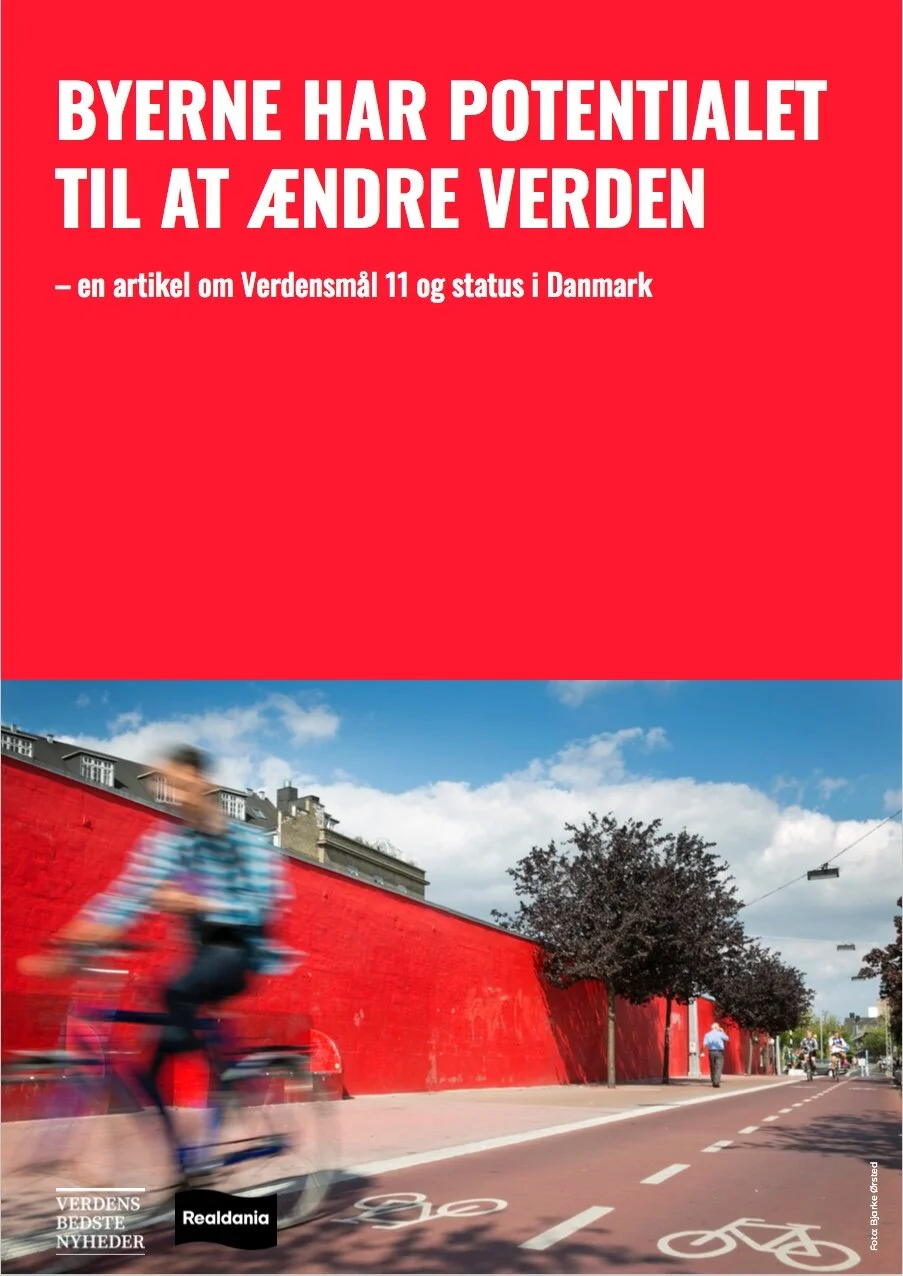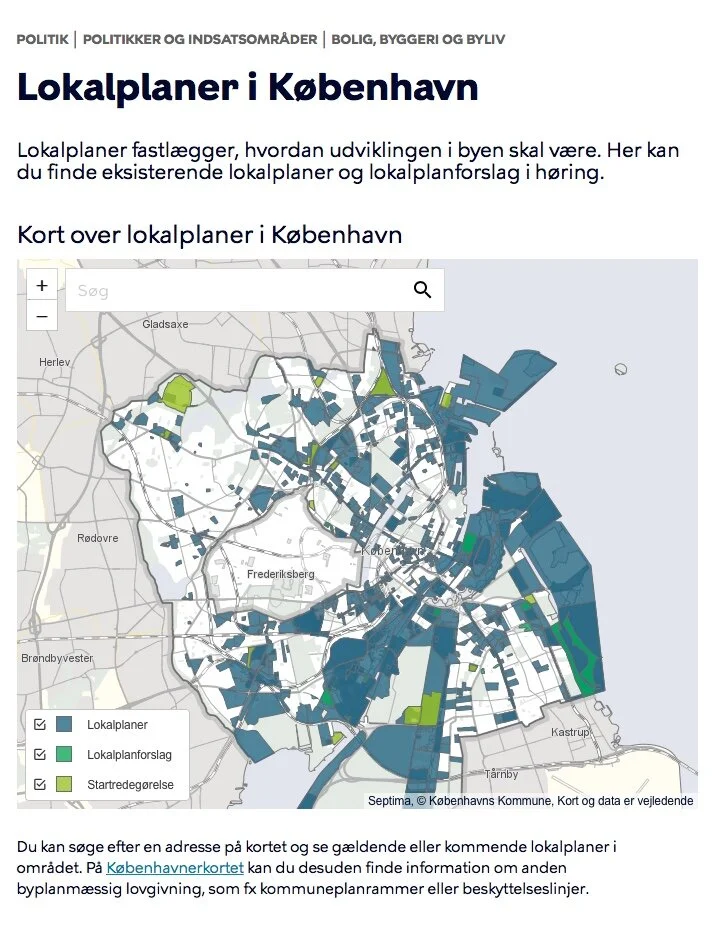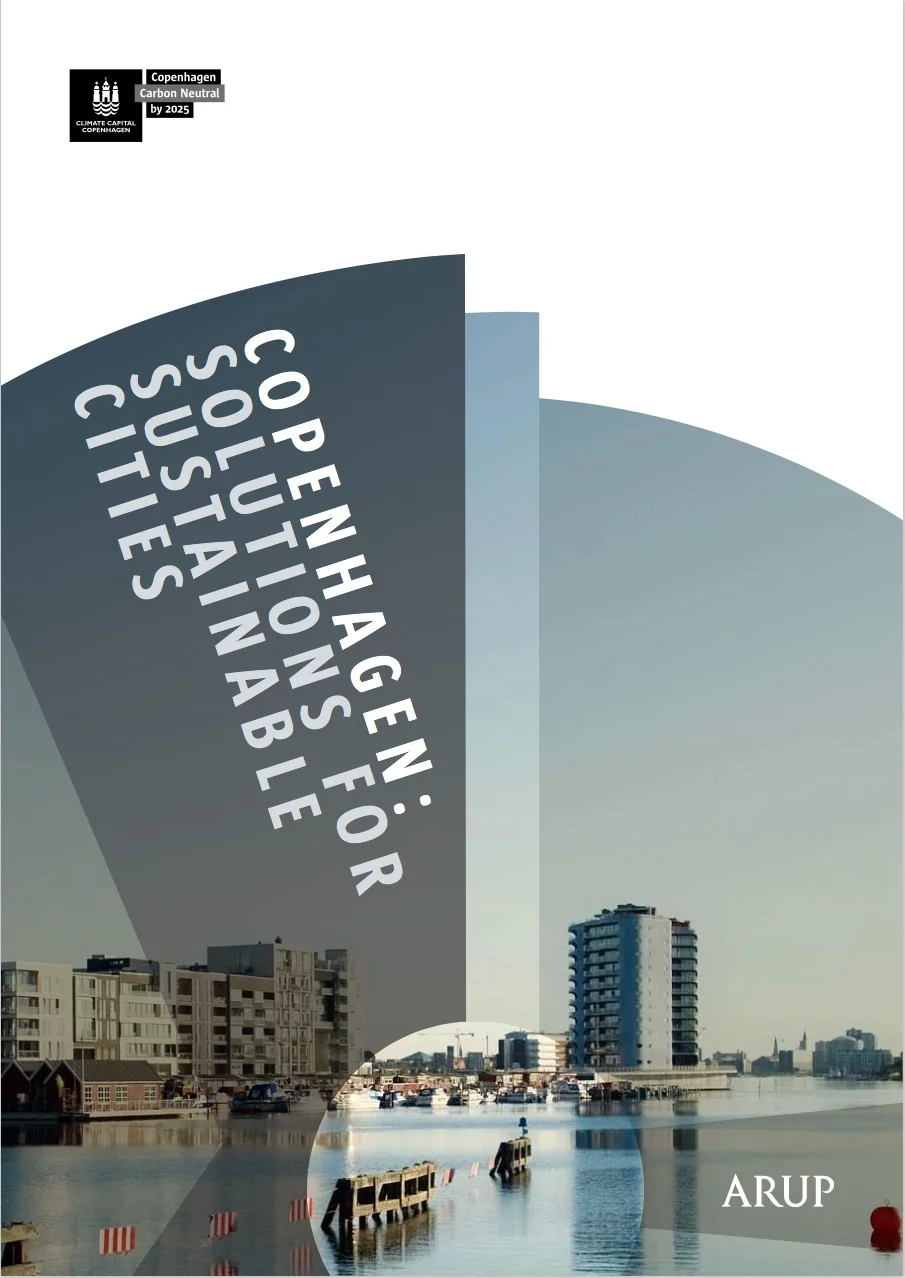climate change and sustainability in Denmark? - start with a search for information on line
/Many of the reports on new policies to tackle climate change and directives on sustainability from the Danish government and by city councils and by organisations such as Realdania or Danish Industry are published on line and many published in English although it is now relatively easy to translate even pdf files from Danish using Google.
Both the title/heading for each report and the image of the report cover are links to the on-line site where the report can be read and, in most cases, downloaded as a pdf file.
CPH2025 Climate Plan - A Green, Smart and Carbon Neutral City (September 2012)
This is an initial assessment and the proposition for a climate plan for Copenhagen. Published in English as well as in Danish, it’s a good introduction to how planners and politicians in the city and the country approached a growing realisation that there had to be a response and then a plan for action.
In 2009 the City Council unanimously adopted a Climate Plan for Copenhagen with the aim to reduce CO2 emissions by 20% by 2015 and then a plan was formulated for Copenhagen to become a carbon-neutral city by 2025.
“The CPH 2025 Climate Plan, is the City of Copenhagen’s plan for achieving carbon neutrality by 2025. In addition to transferring relevant initiatives from the 2009 Climate Plan into CPH 2025, the CPH 2025 Climate Plan contains those objectives, main efforts and initiatives adopted by the City Council which must be implemented in order to achieve the goal of carbon neutrality. ”
There are four main areas of action and each with goals and initiatives. These were …..
• Energy consumption
• Energy production
• Mobility
• City administration Initiatives
…. and were to provide the city with "a sound local-government economy and the most favourable conditions for green growth" and, and as important, the authors of the report realised that this could not be achieved without “the engagement and understanding of the people of Copenhagen.”
Copenhagen Solutions for Sustainable Cities (January 2014)
In his introduction to the report, Frank Jensen, the mayor of Copenhagen, emphasises a positive approach.
Of course, this is not to trivialise the threat of climate change - the city is spending a phenomenal amount of money on storm water control - but to emphasise the threat and the cost might mean that some citizens could question the predictions. Danes are practical, well educated and generally realists but it helps in the decision making process if there are also some gains. So, cleaning the harbour of pollution has created an incredibly popular public amenity and increased property values for homes near the water and an integrated and efficient transport system using environmentally friendly fuel “not only reduces traffic congestion, it also saves us billions of euros and keeps the city efficient and competitive.”
The extensive system of cycle lanes and dedicated cycle-friendly routes through the city means that more and more people use bikes to commute so, with fewer cars on the city roads, there is less congestion and traffic fumes are reduced so more people are drawn to using their bikes and as they become fitter so they are happy to cycle further and, for many, with greater fitness, health problems and health-care costs reduce. Isn't this what is called an accumulator?
The report sets out the way that the use of bikes is integrated into the city transport system and for longer journeys people combine different forms of transport in a single journey. Bike storage is found at most metro and suburban railway stations and there is readily available information on line with a reliable route planner with real-time data on buses to monitor any wait at an interchange ahead so, for instance, platform details and imminent times of departures for trains on monitors on the bus as it approaches a station. Buses and bikes are given priority over cars at traffic lights. Text message ticketing reduces time as people get onto the bus.
The popularity of the harbour swimming areas shows the level of success in clearing the water of pollution - it's described as a “blue transformation” - and was achieved through a working and ongoing partnership between planners, the municipality, environmental experts, engineers, architects, researchers and the private sector.
The report sets out how the supply of drinking water has been protected and emphasise why this is important - particularly as the population of the city is increasing.
There is strong public support for wind power and that was encouraged by creating community-owned facilities and the rapid and successful development of the technology has created jobs and meant a high level of expertise in this sector for designing, manufacturing and exporting wind turbines.
Incineration of waste created an important communal heating and hot water system that was established in the 1920s and this will be maintained but there is now a focus on recycling and waste management and waste treatment and there are developments to exploit biomass as a fuel. With higher summer temperatures predicted, district cooling networks are being developed to reduce the demand for power for individual systems for commercial buildings.
Existing buildings are being renovated or retrofitted to comply with increasingly tough energy and insulation regulations and there is a growing movement to reuse building materials and a public interest in planning homes so that they can be adapted as needs change. It is described as planning for “energy efficiency over the entire life cycle of a building” and there is a certification scheme for sustainability.
The city pursues strategic planning for economic, environmental and social gains so, for instance, the development plan for Ørestad on Amager encouraged companies to remain in the city, rather than moving out to suburban sites or moving abroad, but at the same time encouraged people to stay and live in the city rather than move out to dormitory settlements with all that means for increased commuter traffic.
Finally the report sets out the plans and the data and the advantages for the goal to make the city carbon neutral by 2025 by focusing on solutions that are greener and healthier and that will also make the city more profitable and make it a cheaper place to live … the calculation at the time of the report was that, if all the proposals were implemented, each household would save €537 a year on heating and electricity bills and with the bonus and benefit from living in a greener and cleaner city.
Chapter divisions give an indication of the focus of the report ….
Mobility
Cycling: the fast way forward
Giving integrated transport the green light
Water
The harbour turns blue
Meeting the rising demand for water
Energy and resources
The force of public support for wind power
A city without waste
Keeping the city warm efficiently
Keeping cool under CO2 pressure
Creating buildings for life
Strategy
Urban planning: economic and social benefits
Copenhagen - Carbon-neutral by 2025
Klimatilpasning i byudvikling - Fem løsninger med merværdi for byen (2016)
Climate adaptation in urban development - Five solutions with added value for the city
This publication from Realdania looks at climate adaption solutions for five major urban developments where, starting with the challenge from climate change, these project also show that solutions can and do have a positive impact on the quality of urban life, providing new recreation facilities.
Climate change presents a very real challenge in Denmark. A report by the Norwegian Coastal Directorate concluded that by the year 2100, sea levels around Denmark will have risen by 1 metre and all parts of the country will have increased rainfall and will have to cope with sudden and intense rain storms.
For each of the projects, there is a general and well-illustrated assessment; an interview with a engineer, manager or professional involved with the project and a useful summary of the key points or 'facts' for each scheme.
In Fredericia, on the east coast of Jutland, an area adjoining the historic city is being developed within a substantial dyke or defence that will protect the whole area from rising sea levels.
Tim E. Andersen, project director for Fredericia urban development project observes that:
“Climate adaptation is a major challenge, but also the way to create some benefits, such as climate change, to improve the port environment and create some attractive spaces and green urban spaces where people can meet. If you have the opportunity to take the time to step back and look at the context of things, you can turn something that is a big problem into something that can provide value. At the same time, there is money to be saved if you solve your problems in one go.”
It is a long-term investment but there are clear and, in some cases, immediate gains from this long-term investment so that citizens can appreciate why the work has been undertaken.
In Køge - an historic port 35 kilometres south west of Copenhagen - an extensive redevelopment of a former industrial site will have the edges raised to protect not only new housing but also protect the historic centre. A ridge across the site will direct water back down into the development which might sound counter intuitive but rain-storm water can then be controlled. Flood water will be held back in the streets and courtyards to protect sewers and drains. As in Fredericia, there will be steps down to the water and meadow beyond the flood defence - so access to the natural landscape is retained - and the new housing will be raised up above service basements with parking underneath so streets can be free of parked cars and can be planted to bring nature into the urban area.
A distinct feature of the project at Ringkøbing is that an area or streams and lakes is being constructed first on what has been agricultural land to form an open natural area for drainage before a low-level development with 1,000 new houses is constructed. Here, the climate mitigation scheme is described as 'future proofing'.
NærHedens is a development on 65 hectares south of Hedehusene station - a settlement just over 20 kilometres - west of Copenhagen -close to Roskilde - where there will be 3,000 new homes for about 8,000 people.
Ole Møller, the project director, explains that “cities face some major challenges when it comes to adapting to a harsher climate. But there are some possibilities in using the water recreationally. It is about getting the rainwater away to protect physical values - and about keeping it to increase recreational values. This requires a great deal of analysis work, where you have to deal with soil, landscape, subsurface conditions and much more. The task is simple, but the solutions can be a bit complex.”
It is hoped that the development will become a role model for future suburban development where nature becomes an integral feature of living in a neighbourhood and an important part of social life.
In Sankt Annæ Plads in the centre of Copenhagen, an extensive engineering scheme has been completed where rainwater is drained first into the slightly sunken garden down the centre of the long and relatively narrow park. In the work, traffic lanes were narrowed on both sides and pavements extended out to a width of 6 metres for seating ouside cafes and restaurants and there are new sitting areas and play facilities in the garden down the centre. Part of the project was the creation of a new car park going down three floors below the pier or mole in the harbour at the end of the square with parking for 500 cars that takes parking off the street. This new parking facility meant that the south end of Nyhavn, just a block to the south, could also be pedestrianised.
Ole Bach, project director for the Sankt Annæ Society points out in the report that:
“If you are to succeed in implementing combined climate solutions in urban areas, you must be able to collaborate and communicate.”
You cannot do it properly if you are unable to get all the professional groups, each of which is specialists in cloud mining, trajectory, design, architecture, etc., to understand each other's challenges and work together.
In addition, citizens must be included from the start. It is the citizens who need to use the urban spaces, which is why they have to contribute to their mark and to demonstrate the knowledge they have as a local in the area.
“This on-line publication brings together seven good practice guides, published by Realdania between October 2016 and December 2017. These seven guides present a total of 70 good-practice solutions in energy policies, transport organisation, waste management, urban planning, climate-change adaptation and financing and, to inspire Danish municipalities in their work for climate change planning, there are practical approaches to reduce greenhouse gas emissions. The reports are based on results from the network of cities C40 and Ramboll has translated international insights to a Danish context.”
C40 is a global network of mayors from 91 cities who work together to reduce greenhouse gas emissions and increase resilience of cities to climate change.
Urban Nature in Copenhagen - Strategy 2015-2025 (May 2015)
In Copenhagen, nature in the city is seen as a major resource.
"Whether this is about developing Amager Fælled or increasing the number of green courtyards, our goal is to create a city where Copenhageners can enjoy and live in harmony with urban nature. But it goes beyond that. To me, it is also about transforming the way we view nature in the city. Adding nature to Copenhagen roofs and courtyards and appreciating that a bicycle ride can include flowers, shrubs and bees and not just asphalt."
So this is not just about large public spaces like Fælledparken or open land on Amager Fælled but about trees and plants on the streets and in the courtyards and increasingly about green walls and green roofs.
One goal is that, by 2025, at least 75% of citizens will see Copenhagen as a green city. That might seem to be easy - it could be simply a matter of not building on an open space and leaving nature to take over - but, of course, even that needs official and controlled intervention, often considerable expenditure and often policies need to protect what natural landscape is there but at the same time allow the city to change, grow and thrive.
There have to be and there are policies for the city on biodiversity; climate adaptation; the designation and protection of natural areas; interventions on inappropriate developments; the protection of trees and the deliberate planting of new or replacement trees; the enhancement of the street scape and programmes of work to maintain clean water in streams, lakes and the harbour.
Nature has a new and an important part to play in mitigating floods that can follow sudden storms or cloud burst and there has to be public access to open space because nature is now recognised for its role in relieving stress and there are less-obvious benefits so, for instance, where trees act as a screen or a sound barrier or provide shade to create a micro climate.
The report emphasises five "quality parameters" …. biodiversity; climate adaptation; functionality; spatial qualities and maintenance and points out that understanding these is crucial for the practical implementation of the policy and, ultimately, to its success. That section of the report is reproduced here because it is a key statement of serious intent.
Four themes are identified ….
Urban nature in green municipal areas
Urban nature in urban development areas
Urban nature on municipal land
Urban nature on non-municipal land
Although these appear to be less themes than a simple way of identifying different types of land and ownership they have different problems and dictate different approaches.
Each theme has within it a practical framework so the report assesses:
tools
catalogues
action plans
organisational changes
and partnerships.
Included in the report are case studies including Fælledparken; ongoing plans to develop the old vegetable market in Valby; a case study of Amager Fælled School with the first 'wooded schoolyard' and an assessment of green courtyards in the city.
These courtyards, normally within and enclosed by the blocks of private apartment buildings, are rarely visible from the street but are one of the hidden gems of the green city and are one particularly good example of the city encouraging green enhancement of non-municipal properties. In the city, between ten and twelve courtyards a year are improved. In total 600 courtyards have been improved since the 1960s and that has been a remarkable achievement because it has meant the establishment of 450,000 square metres of lawn and planting 15,000 trees.
published 2019
The Danish report, Baseline for the World Goals, complements that of the United Nations World Goals on Cities, with Danish indicators on urban development.
This is Goal 11 and states “We must make cities, communities and settlements inclusive, secure, robust and sustainable". Each country must translate the World Goals into local conditions, and with Baseline for the World Goals, Goal 11 has become the pilot project for the Danish objectives.
The baseline shows that there are still many weak points where the present development of sustainable cities is not adequate …. the baseline has a number of technical indicators that can be used to analyse Danish urban development, and only five out of 20 indicators show truly positive development.
The Danish 2030 panel has therefore decided that the baseline reports for Denmark and the remaining 16 world targets must also be prepared. They are expected to be completed in the first half of 2020 and will give Danish authorities, businesses and civil society a complete analysis tool for the necessary choices that society must make to strengthen the necessary transition to ensure that Denmark achieves the 17 World Sustainable Development Goals.
BYERNE HAR POTENTIALET TIL AT ÆNDRE VERDEN
– en artikel om Verdensmål 11 og status i Danmark
CITIES HAVE THE POTENTIAL TO CHANGE THE WORLD
- an article on World Goal 11 and status in Denmark
A short but realistic report from Realdania that warns about the problem of being complacent.
Much has been achieved to slow or reverse levels of pollution and there are successes like the use of bikes in Copenhagen or the improvements in water quality in the harbour but there is real pressure as more and more people move from the countryside to the city so climate change schemes have to be flexible or adaptable and serious decisions will have to be made about coastal communities where individuals may not be able to afford the insurance they would need to rebuild after storm or flood damage and the community may not be able to justify the substantial amounts of money needed to provide physical defences.
Lokalplanner i København / Local Plans in Copenhagen
For the city of Copenhagen, plans for proposed developments - including extensive schemes to deal with flooding from rain storms - are published on line as part of the public consultation process and, for planners and architects from other countries, these readily-available reports provide an introduction to developments in planning and major engineering projects for climate change mitigation in the city.
The front page has a map where the reader can zoom in to find a specific report for a district or city block or square or specific building and the map is live so with links to a pdf report.
More recent reports have extensive research on historic context and function so they are as much an impact assessment as a public consultation document.
